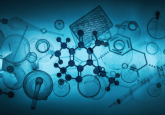3. What have been the most exciting developments in metabolite profiling?

Dajana Vuckovic: “In my opinion, in vivo microextraction is one of the most exciting developments in metabolite profiling as it provides excellent metabolite coverage and eliminates the need to remove biofluid or tissue samples. This is an especially powerful approach for enzymatically unstable metabolites and longitudinal studies where repeated sampling of the same individual may not allow the use of traditional approaches. A second exciting advancement is single-cell metabolomics, especially liveMS technology, which elegantly integrates advanced microscopy, single-cell manipulation and nanoESI MS into a single platform.”
Ian Wilson: “Well, for me it was seeing 1H NMR spectroscopy’s ability to provide metabolite profiles for urine for the first time! But, if we rephrase the question to what have been the most exciting ‘recent’ developments in metabolite profiling it has to be the arrival of LC–MS as a useful practical laboratory technique (rather than it being an interesting, expensive and unreliable toy). This has opened up the field to a much wider range of laboratories and has driven the expansion of metabolic phenotyping. New developments such as ultra (high) performance liquid chromatography (UPLC/UHPLC) have added a further impetus with ion mobility spectrometry now coming into play as well. As a result of the twin tools of NMR spectroscopy and MS, used in combination, I believe that we have the basic tools needed to survey the metabolome.”
Fengguo Xu: “Chemical derivatization-based LC–MS strategy sheds new light on metabolite profiling. Due to the enhancement of sensitivity and selectivity, a wider range of sub-metabolites, such as amines, carboxylic acids, phenols, thiols and alcohols, would be detected compared with conventional MS-based methods.
In the view of global metabolomics, the integration of different chemical derivatization procedures has appealed to researchers. Liang Li (University of Alberta, Canada) and his colleagues have developed a novel metabolomics method for the profiling of amino- and phenol-containing metabolites based on dansylation. In addition, the fragmentations of derivatized sub-metabolites are always in the same pattern, thus general multiple reaction monitoring (MRM) conditions might be developed to monitor a subset of metabolites, in spite of limited authentic standards.”






